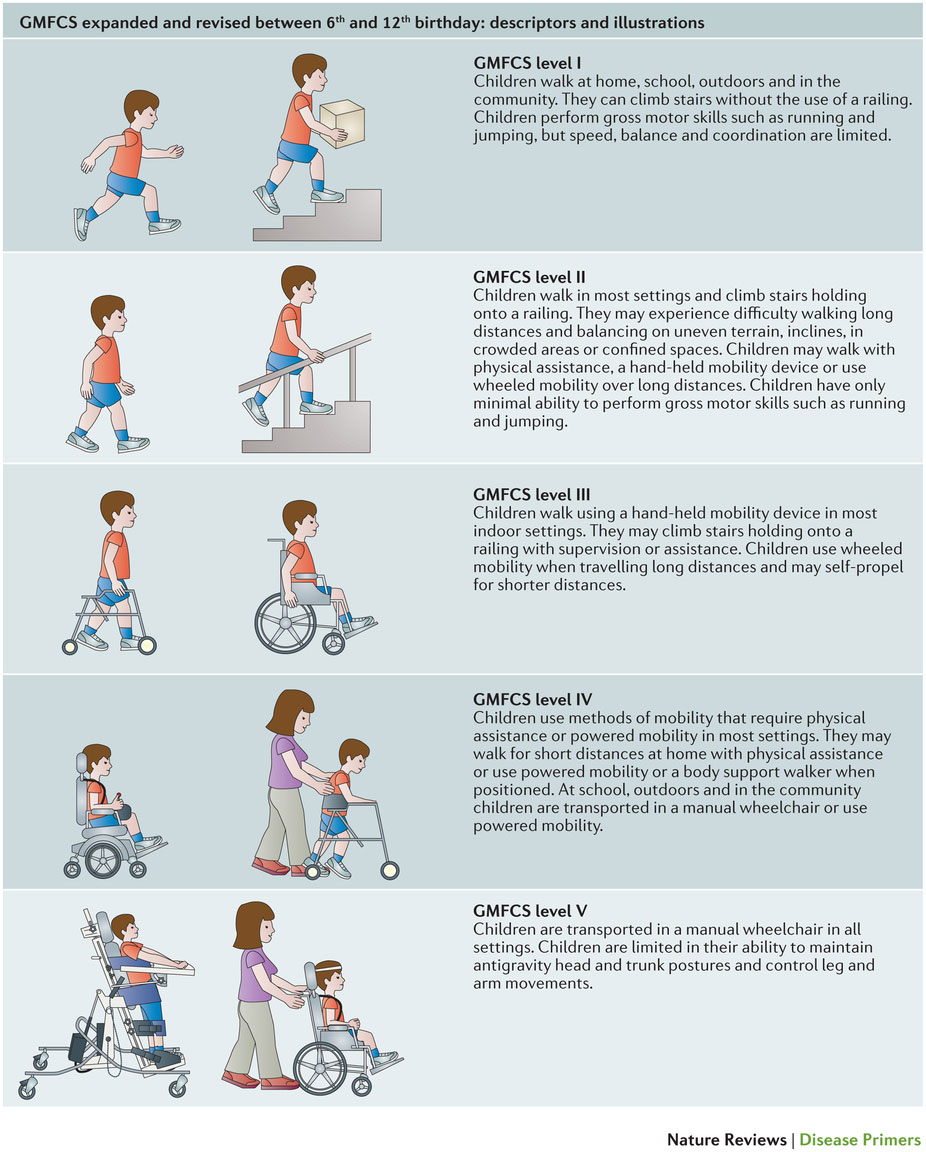脳性麻痺
Cerebral palsy
2016年1月7日 Nature Reviews Disease Primers Article number: 15082 (2016) doi: 10.1038/nrdp.2015.82

脳性麻痺は、小児期に発症して生涯続く身体障害の最も多い原因であり、新生児の約500人に1人、世界では推定1700万人が罹患している。脳性麻痺は、伝統的観念における疾患単位ではなく、非進行性脳損傷の兆候、あるいは出生前、周産期、または出生後早期に生じる病変を有する小児の臨床記述である。脳性麻痺の臨床症状は、運動障害の種類、機能的能力の程度、身体の活動制限や障害部位の点で大きく異なる。現在のところ、治癒する方法はないが、脳損傷の予防と改善のいずれにも進展が見られる。例えば、早産時の硫酸マグネシウム投与やハイリスクの乳児の全身冷却によって脳性麻痺の発症率と重症度を低下できる。この障害は患者の生涯にわたって影響するが、脳性麻痺に関する大部分の研究努力と管理戦略は、現在、小児医療に焦点化している。脳性麻痺患児の臨床管理は、身体機能と社会活動への参加を最大化することに加えて、てんかん、経管栄養、股関節脱臼、脊柱側彎のように患者の状態を悪化させる要因の影響を最小化することに方向づけられている。これらの管理戦略には、幼年期における神経機能の促進(医学的併存症、筋力低下および筋緊張亢進の管理、運動機能を促進するリハビリテーション術の施行、二次性筋骨格障害の予防)も含まれる。施設の資源が不十分な場合、脳性麻痺患児の要求に応えることは特に困難である。
PrimeView
脳性麻痺は、非進行性脳損傷による運動機能不全症状を有する小児および成人の臨床記述である。このPrimeViewでは、脳損傷部位によって異なる運動障害のさまざまな症状に焦点を合わせる。
本Primerの図解サマリー

